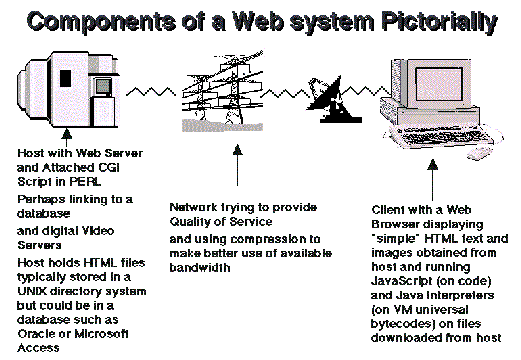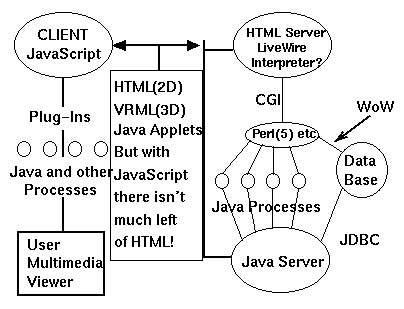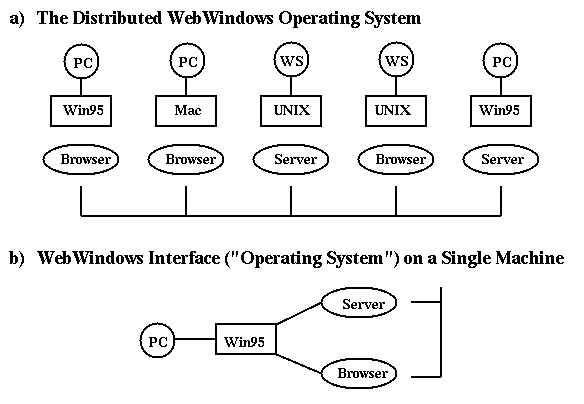

Figure 1: Synergy of InterNet and IntraNets

Figure 2: Simple representation of ``old'' (pre-1996) WWW software
architecture showing emerging advanced services, as well as basic
technology
Figure 1 shows a classic Web set up indicating it is ``just'' a client server application, and its implementation requires appropriate client, server, and network technologies. We will learn mainly about the client and server software issues in this paper, and only describe enough about network hardware and protocols to put the other issues in contact. The original Web architecture, shown in Figure 2 was comparatively simple with clear functionality in each component. However, as the Web evolves, we move to the richer confusing scenario of Figure 3 with many overlapping concepts. Actually, the natural Web model is probably a server-server architecture, as all machines need capabilities embodied in servers. This fits with Vice President Gore's view of the NII where everybody is both a consumer and producer of information. We can, of course, implement this (crudely) already by running a Web server and Web client on every machine (see Figure 4(b)), as well as the distributed environment, Figure 4(a). The growing functionality in clients is natural because, although individual servers are typically much more powerful than individual clients, the total compute power (and dollar investment) is probably an order of magnitude for clients than servers (Figure 5).

Figure 3: 1996 Java/Netscape client-server model with
evolving/confusing/overlapping capabilities

Figure 4: WebWindows for (a) the World or (b) one PC